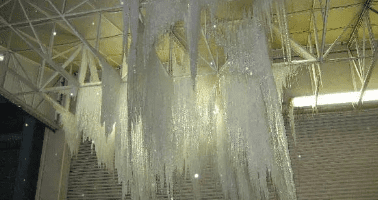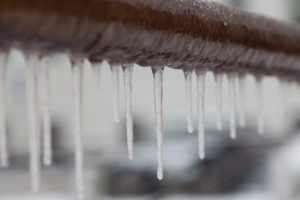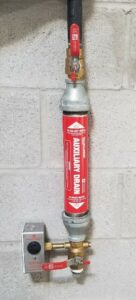How to Winterize a Fire Sprinkler System

For many states this time of year begins the onset of colder weather, for that reason this blog gets reposted to remind everyone of the importance of verifying sprinkler systems are prepared for the cold weather ahead. Read on to know what steps to take to winterize a fire sprinkler system.
Lack of proper maintenance is one of the leading reasons for fire sprinkler system failures. Fire sprinkler systems shall be properly inspected, tested, and maintained (ITM) in accordance with NFPA 25, The Standard for Inspection, Testing, and Maintenance of Water-Based Fire Protection Systems. Systems exposed to cold weather are especially vulnerable.
 During cold months, these systems are more susceptible to catastrophic failure. Frozen sprinkler pipes are among the more common service calls throughout winter months. Maintaining a minimum of 40 degrees (F) is imperative in ensuring the sprinkler pipes do not freeze. Many areas that go unnoticed during the summer can create issues in cold months, these areas include, but are not limited to, entry ways (vestibules) and stairwells, unoccupied spaces, skylights, and areas that are not properly insulated.
During cold months, these systems are more susceptible to catastrophic failure. Frozen sprinkler pipes are among the more common service calls throughout winter months. Maintaining a minimum of 40 degrees (F) is imperative in ensuring the sprinkler pipes do not freeze. Many areas that go unnoticed during the summer can create issues in cold months, these areas include, but are not limited to, entry ways (vestibules) and stairwells, unoccupied spaces, skylights, and areas that are not properly insulated.
Sprinklered areas that cannot be maintained at 40 degrees (F) or above are usually protected with a dry pipe or antifreeze system. These types of systems may require more thorough assessments and routine maintenance to keep the systems from freezing. Antifreeze systems should be tested prior to the onset of freezing weather to verify that the antifreeze solution will protect to the anticipated temperatures for the region where the systems are installed. If they cannot protect to the required temperatures, they must be drained and provided with a new listed antifreeze meeting the requirements of NFPA 25, Section 5.3.4.
Wet portions of the dry pipe valve must be maintained at a minimum of 40 degrees (F) and the enclosure must be inspected daily to verify minimum temperature is maintained, and weekly if the room is equipped with a low-temperature alarm.
The low point and auxiliary drains are required to be drained after each operation of the system, before the onset of freezing weather, and as needed after that. How often these drains shall be operated throughout the cold season will depend on how much condensation is in the drain. This could be a daily, weekly, or monthly requirement, based on the existing system and building conditions.
How to Winterize a Fire Sprinkler System per NFPA 25, 2020
A 13.4.5.3.2- Removing water from a dry system is an essential part of a good maintenance program. Failure to keep the dry system free of water can result in damage and expensive repairs to both the system and the building. A program for monitoring the condition of the system and the operation of the auxiliary drains should be instituted. Auxiliary drains should be operated daily after a dry sprinkler system operation, until several days pass with no discharge of water from the drain valve. Thereafter, it might be possible to decrease the frequency to weekly or longer intervals, depending on the volume of water discharged.
Likewise, when preparing for cold weather, the auxiliary drains should be operated daily with the frequency of operation decreasing, depending on the discharge of accumulated water. In many cases, the frequency of the operation can decrease significantly if a system is shown to be dry. A quick-opening device, if installed, should be removed from service temporarily, prior to draining low points.

- Close upper valve.
- Open the lower valve and drain the accumulated water.
- Close the lower valve, open the upper valve, and allow for additional water accumulation.
- Repeat this procedure until water ceases to Discharge.
- Replace plug or nipple and cap in lower valve.
Cold weather causes issues in all industries, in the fire protection industry it can wreak havoc. When not properly maintained, fire protection systems can freeze, burst, and fail to function entirely if needed. It is extremely important to ensure that these systems are properly maintained to ensure they are ready to operate in the event of an emergency.
Need More Information to Winterize a Fire Sprinkler System? Ask NFSA’s Expert of the Day!
The NFSA hopes this article on how to winterize a fire sprinkler system helps contractors and property owners prepare for freezing temperatures; however, if more information is needed on the topic, members can always ask an Expert of the Day question.
For more resources on freeze protection for fire sprinklers, check our blog. The National Fire Sprinkler Association’s (NFSA) Codes, Standards and Public Fire Protection Team is the best resource for all codes and standard updates surrounding fire protection. Team members sit on numerous NFPA technical committees and vote on changes that create a safer world. For more information on the NFSA, or to become a member of our association, visit our membership page.
